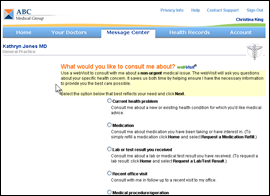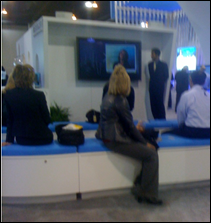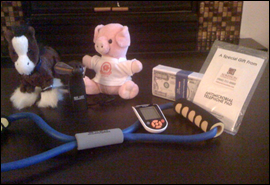News 10/20/09
GE announces ugly Q2 numbers, which included a 20% drop in earning for the healthcare division. The company as a whole reported a 17% decline in revenue and EPS of $.26 vs. $.54.
You know the ambulatory EHR business is heating up when the big hospital guys are hustling to get a piece of the action. Cerner partners with CDW Healthcare to promote its PowerWorks product, marking the first time that Cerner has teamed up with a national channel partner to offer its complete ambulatory suite of products. And, Healthcare Management Systems, another seasoned hospital vendor, announces a new ambulatory EMR/PM offering called HMS Ambulatory EMR. Of course HMS plans to tightly integrate the product with its inpatient offering (just like Cerner seamlessly integrates all its products). It’s not as if the hospital vendors are just now realizing the importance of aligning with the ambulatory world; rather, everyone seems to be angling for the best possible market position in anticipation of a flood of EMR sales.
Cardinal Health strikes a deal with Orchard Software to distribute Harvest LIS and Pathology Diagnostic IS, which are typically sold in physician offices. Cardinal’s sales force will provide additional feet on the street trying to sell the Orchard products. Yet another example of a big healthcare player that probably paid little attention to the ambulatory world a year ago.
I recently accompanied a family member to a doctor’s appointment and of course took note of the technology in place. We were at a large, single specialty clinic and my family member’s doctor used an EHR, complete with pretty graphs to take home. However, the practice as a whole did not have an EHR, which is curious. As we waited in the exam room, I overheard the front desk calling to remind patients of their upcoming visits. We were handed a paper prescription as we checked out. And, when the follow-up appointment was made, the receptionist used a NCR duplicate reminder form. I asked what the other copy was for and was told it would go in the patient’s chart. Alas, a reminder that HIT has a long way to go in many practices.
athenahealth completes its $22.3 million all-cash purchase of Anodyne Health Partners.
Iowa Health System and Allscripts launch ePrescribe Iowa, in which physicians will be offered a free Web-based e-prescribing tool.
A New York Times article says that time pressures, mandatory multitasking, and real-time attention demands (including EMRs) are burning out doctors who no longer have any contemplative time.
There is likely correlation between those stresses and the decline of physician-owned practices. The NEJM estimates the number of doctors owning at least part of a practice has been declining 2% annually for the last 25 years. Financial realities and quality of life issues contribute to this trend. However, I can remember growing up in a world when single families owned the corner grocery store, or a local garage, or the pharmacy. Perhaps the big hospital chains are simply the healthcare version of Walmart and CVS.
UnitedHealthcare and Centura Health (CO) select three rural health clinics for its telehealth pilot program. The clinics participating in the Connected Care program will have the ability to link with remote medical specialists using audio/video technologies and health resources.
Researchers find that in some cases a patient’s de-identified data can be re-identified based on correlating anonymous information left in cyberspace. The researchers were able to re-identify private Netflix data, leading privacy advocates to suggest the same thing can be done with medical information. Privacy rights advocate Dr. Deborah Peel points out there are currently no federal laws prohibiting re-identification. Before anyone tries to re-identify my private data, I’d like the record to reflect that The Sound of Music is my all-time favorite flick.
Regional health insurer MVP Health Care announces plans to reimburse 22,000 physicians using RelayHealth’s webVisit consultations. MVP is partnering with IPA Mohawk Valley Medical Associates (NY) to offer physicians immediate reimbursement and subsidies to defray deployment expenses for the RelayHealth service.
Surescripts says it is adopting a new version of a technical standard being recommended as part of the HITECH act. The new standard allows physicians to use EHR software to electronically access prescription information from pharmacies and health plans. Interestingly, CMS has yet to adopt the standard — though Surescripts is ready, just in case.














The article about Pediatric Associates in CA has a nugget with a potentially outsized impact: the implication that VFC vaccines…